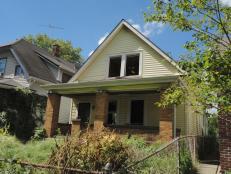6 Things to Know Before Buying a New Home

One of the biggest mistakes new homebuyers make is assuming that everything in their house will work perfectly because it’s brand new.
No matter how precise and careful builders are, there is no such thing as a perfect house, asserts Diane Saatchi, a senior vice president at real estate firm The Corcoran Group’s East Hampton, N.Y., office. The company has offices throughout New York and South Florida.
“Problems always crop up,” she says, “even though all the items on the builder’s punch list (a list of all the things the builder must complete before closing) were resolved prior to the closing.”
However, the new problems weren’t on the punch list, and the new-home buyers have ended the relationship with the builders, which is a big mistake the frustrated homeowners now regret. For example, owners discover that the house’s hot water tank is inadequate and can’t supply enough hot water for three people taking showers at the same time. Or circuit breakers are shutting down when too many appliances are used simultaneously because the builder cheaped on wiring. And that’s only the tip of the proverbial iceberg, says Saatchi.
The solution? Build a clause into the contract for fixing unidentified problems.
New-home buyers should prepare themselves for all contingencies by having their attorney include a clause in the contract that says that unidentified issues that crop up after the closing must be resolved. “The standard new construction insurance policy or warranty seldom covers these issues,” Saatchi cautions.
And even when problems are resolved, never end a relationship with a builder, advises Saatchi. “Always maintain a good rapport because there is no predicting what problems will suddenly surface years after the homes were bought.”
A Real-Life "Money Pit"
Unfortunately new homebuyers don’t get to live in their homes before they buy them. Practically speaking, they don’t invest time in doing their homework, seeking professional advice or hiring attorneys who specialize in real estate law. They blindly trust fate and assume that the builders they’re working with are ethical and abide by construction best-practices rules.
Patrick Conlee, an independent pharmacist, always prided himself on making shrewd investments. But he admits he made every mistake in the book when he bought his new home in the Albany, N.Y., suburb of North Greenbush in 1995.
Conlee, 43, was convinced that he had stumbled on the deal of the century when he found a wood-frame house built on a block foundation, nicely situated on a half acre of land. The house had five rooms, a large basement, a two-car garage and a concrete deck over the garage.
Conlee’s father, a tile mason, warned him that the house needed work, but his son didn’t heed the good advice of the veteran artisan. All Conlee saw was the bargain price tag of $79,000. He conveniently forgot the time-tested adage of “You get what you pay for.”
“I knew I’d have to put money into the house, but I reasoned that in the long run, it would be worth it because I’d only be increasing the value of the home,” he says.
He was right on that count, but he had no idea the extent of work needed and the dollar signs in front of it. He soon found out. More than 13 years later, he’s still pouring money into the house.
The first major mistake Conlee made was not hiring an inspector to check the house over. For a very reasonable $200, he would have learned that his house needed thousands of dollars of work.
Conlee’s first major job was upgrading the house’s electrical circuitry. “The house was inadequately wired,” he says. Practically all of the house’s 30 outlets, not including the basement, had to be replaced.
The tab: $5,000.
Then there was the roof. Conlee chuckles, “I never bothered to climb up on the roof and check it out. It looked okay from the ground, so I assumed there were no problems.”
The builder had masterfully cut corners throughout the construction process. When it came to the roof, he had used cheap shingles and failed to build vents and gutters, essential for moving water and allowing the roof to expand and contract in order to deal with moisture, heat and humidity. When it rained or snowed, water indiscriminately flowed everywhere -- outside down all sides and inside in choice favorite locations such as the bedroom, right over Conlee’s double bed, and the dining room, right smack in the center of an antique dining room table given to him by his grandmother.
Cost of a new roof: $10,000.
And there were major problems with the deck as well. Consistent with the builder’s track record for slipshod work, the deck wasn’t angled so the water or snow would run off into strategically positioned gutters. So Conlee had to contend with huge puddles when it rained or massive snow mounds in the winter, which opened up yet more leaks.
The deck was repaired once, but Conlee says it still needs work, and, well, he doesn’t want to talk about it -- especially the price -- because the topic pushes his blood pressure to abnormal levels.
So how did this once calm, easygoing professional deal with the continuing angst and frustration of new-home ownership? “To say that I was angry is an understatement,” he says. “But rage wasn’t getting me anywhere. And it certainly wasn’t good for my health.”
What saved Conlee was a sense of humor. “At first, I felt like a bona fide moron who should have known better,” he says. “And constantly hearing my father say, 'I warned you,’ wasn’t doing me any good either. But then I resigned myself to dealing with the situation and took it all in my stride.”
Conlee likens the first eight months of living in the house to scenes in the hilarious 1986 film “The Money Pit,” starring Tom Hanks and Shelley Long. “Talk about identification,” laughs Conlee. Remembering scenes from the film, he says, “every time a workman told me a job would take two weeks, I added another three weeks.”
Would Conlee do it all over again? “Yes,” he says, “but I would do it differently. I’d do my homework, and before I signed on the dotted line, I’d have an inspector go over the house with a fine-tooth comb. Then I’d have a contract that makes the builder responsible and liable for all repairs whenever they crop up. And that’s for starters.”
While he can joke about his “Money Pit” purchase, this Albany pharmacist admits he “screwed up.” “Through it all, I have a house that’s worth considerably more than I paid for it.”
Yet Conlee admits that he paid a high price to get to that point.
Six Mistakes New Homebuyers Should Avoid
“New buyers ought to do their homework and find out as much as possible about the buying process,” advises Sid Davis, president of Sid Davis and Associates, a general real estate brokerage firm in Farmington, Utah. Here, the top six mistakes homebuyers routinely make, plus Davis's tips for avoiding them.
- Committing to a property before getting a pre-approved loan from a lender. So many people go out house-hunting and fall in love with a new model house without knowing what kind of a mortgage they’re entitled to. “They find themselves at the whim of a builder’s salesperson who promises financing,” says Davis. “This has been an ongoing problem over the past half decade. Many homebuyers take on mortgages that are toxic, which means they’re all wrong for the buyers.”
When buyers let their emotions get the better of them, they often make catastrophic mistakes, Davis observes. Model homes are dangerous, he says, because they seduce potential buyers. “The rooms are beautifully decorated and look perfect,” he says. The psychology is obvious, warns this cynical real estate veteran. “They’re meticulously laid out and furnished to punch all the right buttons in potential new-home buyers.”
So the naive buyers agree to buy the house without having any idea what kind of monthly payments they can afford. The result is that they often make bad deals and take on more than they can afford.
The first thing new homebuyers should do is shop for the right mortgage lender (it could be a bank, builder/developer or credit union) before committing to a property. Speak to at least three lenders. Find one with excellent credentials and, and most importantly, has programs that are financially feasible.
- Failing to get good faith estimates. Buyers know they’re getting the best financing when they go to the trouble to get good faith estimates, which are mandated by the federal government’s Truth in Lending Act. Simply put, the legal statute says that mortgage lenders must provide buyers with good faith estimates within three days of presenting a loan. The document breaks down the loan into its component costs. Most importantly, the buyer’s annual percentage rate, or APR, is clearly presented at the bottom of the contract.
This is how loans are compared. “The APR tells new-home buyers exactly what a loan costs, including closing fees,” says Davis. “They can shop the market and compare different lenders’ rates. It is the key, telling lenders which are the best loans.”
If new homebuyers visit three different lenders, for example, and get three good faith estimates, they’ll compare each APR and take the cheapest, says Davis. Better still, it also gives buyers negotiating leverage -- the power to ask lenders to shave money off closing costs, for example.
- Being reluctant to negotiate terms. Surprisingly, most new homebuyers fail to negotiate, says Davis. Reason? “They’re uptight about being confrontational or disagreeable.” But negotiations don’t have to be hostile. After all, buyers are negotiating the single most important purchase of their lives. “If done professionally and equitably, negotiations most always work in buyers’ favor,” Davis adds. “And lenders and builders expect buyers to negotiate. It’s all part of the game.”
“With an official credit limit in hand (good faith estimate), new homebuyers can walk into new development sales offices knowing precisely what they can spend,” says Davis. ”They have to feel good knowing that they’ve squared away the numbers. Now the salespeople are likely to say that if buyers use their lenders, they’ll give buyers $2,500 to $5,000 in upgrades.” This is a very common tactic and ought to be seriously considered, Davis advises. “If buyers feel it’s a good deal, they ought to ask for a good faith estimate and then compare it to the ones they’ve got. Now buyers can say, ‘If you match this good faith estimate, I’ll go with your company,’” he says.
By holding a power hand, new homebuyers can shrewdly negotiate and get the best new-home deal within their means. “Buyers can walk away with not only the best rates, but thousands of dollars in upgrades as well,” Davis says. “Now buyers are no longer victims; they’re setting the rules.”
- Failing to ask neighbors about a builder's reputation. Before new homebuyers sign on the dotted line, they ought to speak to a few of their potential neighbors to get their opinions about the builders concerned. Ask important questions such as: Did they have any problems? If so, what were they? How long did it take for the builder to get to the punch list? If the builder was slow to address a problem or has a bad reputation, this is the time to find out, says Davis.
- Failing to have a new home inspected by an independent professional. “This one really raises eyebrows,” says Davis, “because major design flaws are often uncovered.” Amazingly, most new homebuyers don’t bother to have their home inspected. “They mistakenly assume that because it’s new, it’s perfect,” he says. He advises new homebuyers to bring in their own inspector. It only costs, on average, around $300, and is well worth every cent."
“Inspectors find problems 50 percent of the time,” says Davis. Home inspectors are easy to find. Visit the National Association of Home Inspectors Web site to find an inspector near you.
- Neglecting to ask for a "punch list" before closing. The punch list is a list of problems that have to be fixed. Good, reliable builders will do this automatically. But don’t assume it will be done, says Davis. Some of the items on the list are easy to fix, such as popped nails or screws on the drywall. Some are not so simple, however. The builder flags them with red tape and then has his workers fix each one. Once they’re fixed, Davis says there should be another punch list walkthrough to make sure all the items on the punch list were fixed. Warning: Many builders will pressure buyers to close before the punch list items are taken care of so they can go on to the next job. “Never close before the home is completely finished,” Davis strongly advises.














































